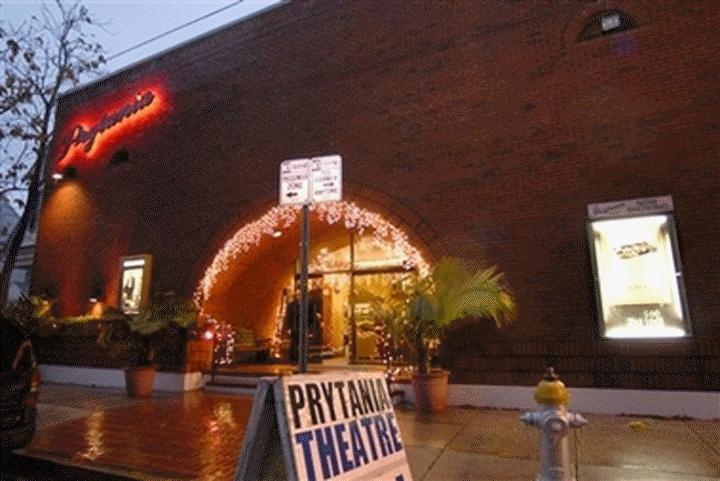EDITOR’S NOTE: New Orleans is a city that is considered to be one of the top tourist destinations in the United States, receiving almost 20 million tourists a year. One of those reasons is the unique architectural styles found throughout the city, such as French influence and shotgun homes. Another is the unique style of city planning that began in Jackson square and follows the form of the Mississippi River. The history of the unique architectural styles is something New Orleans natives and those who visit should be informed on — everything from street tiles to not-so-tall buildings. This piece on Prytania Theater was originally published on November 18th, 2020.

The Prytania Theatre as it stands today. Photo from www.theprytania.com
Authors: Greg Miller, Melissa Steckler, Zachary Serota
The Prytania Theatre is the oldest operating theater in New Orleans, dating back to 1915. It is the only single-screen, suburban theater in the state of Louisiana. It caters to film buffs and families alike with its eclectic selection of film viewings, alternating between modern blockbusters and classic films. Its late owner, Rene Brunet (died August 17, 2017 at the age of 95), is a luminary on this history of Theatre in New Orleans.
Early History
The Prytania Theatre originally opened its doors in 1915, but in 1927, the theater was relocated to a neighborhood house costing $100,000 on Prytania Street near Peters Ave. The new Prytania, which was operated by the M. H. Jacobs Theatrical Enterprises, was, as Mr. Jacobs put it, a theater that, “…capitalizes the fact that buildings are living things, possessing individual character and personality” (“Prytania Theater Opening is Gala Event Saturday.“The Times-Picayune, April 17, 1927, Section 4, Page 3). The Prytania Theatre was one such building, as it featured the occasional fashion show, such as their 1928 Easter Fashion Show. Tickets cost 30¢ for adults and 15¢ for children, and promised to display, “The latest American and Parisian modes” (“Prytania Theater”(advertisement). The Times-Picayune, March 15, 1928, Page 26). Later, though, they became more standardized in that they showed only films and grew to become a very successful business venture that promised an enjoyable evening to audience members.
Financial Difficulties
With the birth of suburban shopping centers in the 1970’s, city theaters took a turn for the worse. These mega suburban “cinemas” provided large parking lots to enormous theaters in neighborhoods close to people’s homes, something not offered by the tiny theaters in the crowded downtown area. As a result of the growing suburban competition, many theaters closed shop. However, a handful of theaters in the New Orleans area found a different way to combat their rivals and became best known as “alternative” movie houses. The most popular ones included the Toulouse Street Theatre, the Pitt Theatre, the Abalon Theatre, and the Prytania Theatre (Maher, Marileen. “Can They Survive? The Ups and Downs of New Orleans’ Alternative Movie Theatres”. Gris Gris, December 11-17, 1978, Pages 17-18).
When the Prytania Theatre was having financial difficulties, a firm in Alberquerque, New Mexico stepped in during the month of January 1977 and began showing old movies, art films, and popular recent movies. Up until that time, every theater in the area was only showing the films that had just ended in the larger houses, and ticket sales were waning. According to Woody Prejean, the assistant manager at the time, audiences loved the new concept, and Prejean based much of the success on the fact that the Prytania never ran movies for more than three days (Maher).
At this time, the Prytania was showing two movies a night, with an admission price of $2.50, and house seating capacity was capped at 340. The theater published a large poster displaying film showings for the subsequent month, and offered subscription tickets for 10 films at $17.50 (Maher).
Business Adaptation
A night at the movies continued to be the most popular way to spend the evening, though young people were increasing in attendance, while their parents were decreasing. These adolescents and young adults became better known as the “core audience,” and they were accustomed to attending movies at the suburban shopping centers. Instead of trying to compete with these large cinemas, the Prytania played to a niche market. Like a handful of other repertory cinemas in New Orleans, the Prytania’s success was attributed to program flexibility and its willingness to try anything. Although the theater had already been displaying their monthly poster in the theater itself, they dropped their daily newspaper ad and opted to distribute small flyers with the schedule of attractions for the next several months (Desplas, John. “Repertory Cinema: The Old and the New”. Figaro, August 23, 1978, Section 3, Page 21).
John Desplas commented on the cinema saying, “An added feature of the poster tacked next to the bathroom mirror or stuck to the refrigerator with a magnetized miniature banana is that it can act as a constant reminder that such-and-such a film will be on this week. That kind of reminder can make the difference between regular attendance and occasional movie-going.” This combination of new approaches to airing films proved to be a hit for the tiny theater servicing the uptown area of New Orleans, and the theater remains today as a thriving venue for film showings. (Desplas 1978).
This article was originally published on Apr 27, 2012, on MediaNola, which became ViaNolaVie through a partnership with NolaVie.






[…] I heard the owner of the Prytania Theater Rene Brunet passed this summer, I felt the ebbing of an era. The movie theater: the place that […]